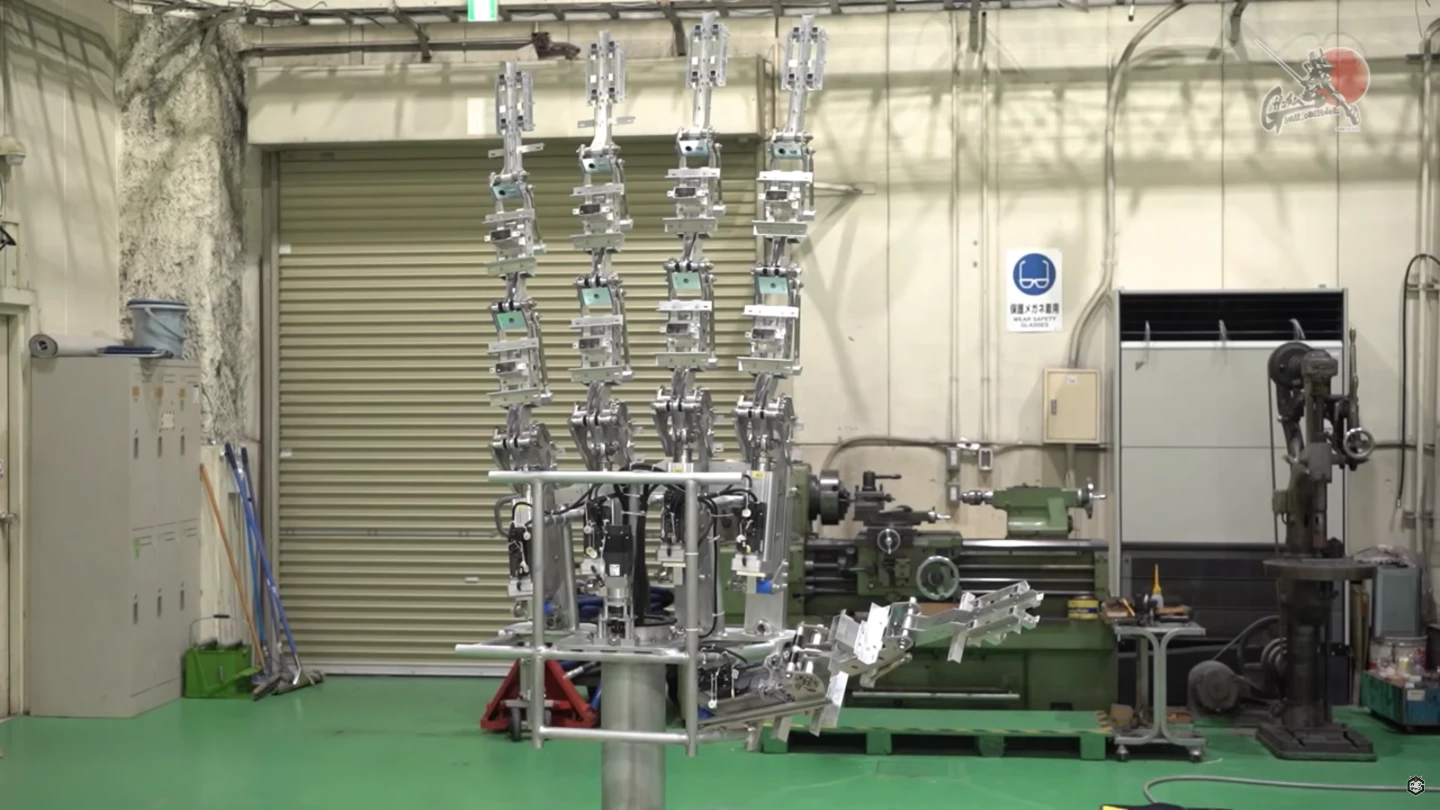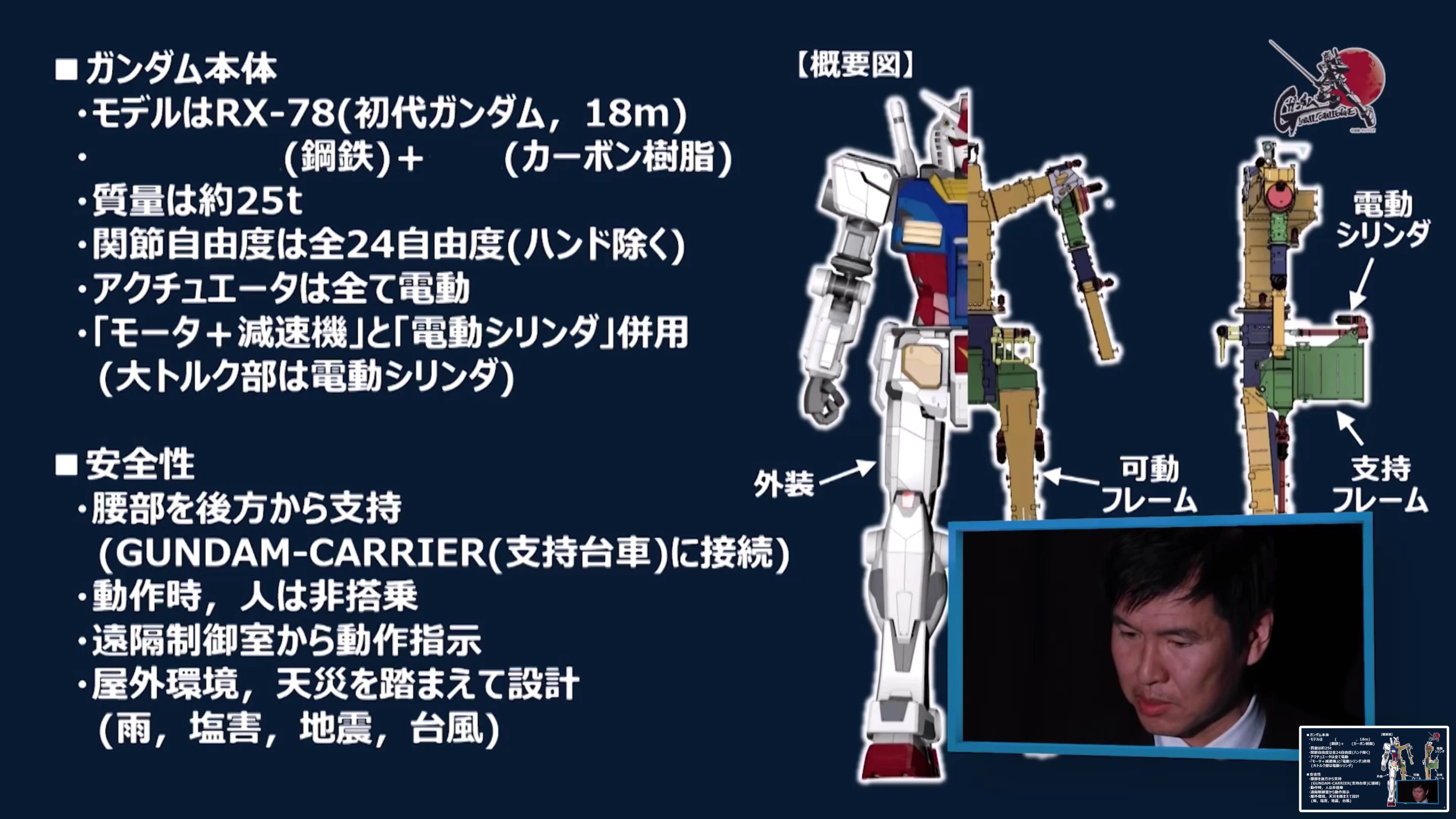The port of Yokohama will play host to a colossal, walking Gundam robot for a year starting this October. With 24 degrees of motion, it'll be the most advanced full-sized Gundam ever built, and the engineering challenge of making it work is enormous.
First going to air in 1979, Yoshiyuki Tomino's Gundam series has left an indelible mark on Japanese culture and the world of animation. Its giant, samurai-influenced, sword-fighting mecha robots have launched nearly 50 official TV series and movies, and inspired countless others. Transformers, Pacific Rim, Real Steel, Voltron, MegaBots, anything with a big robot in it owes some debt to Gundam, indeed, even the Master Chief's armor in the Halo series of video games. It's impact is so great, Gundam is currently ranked as the 14th highest-grossing media franchise of all time.
Japan in particular loves these big fellas. Sales of miniature figurines from the official Bandai Namco company itself were approaching half a billion back in 2015. And there's been no shortage of full size, 18-meter-tall (60-ft) recreations either. Indeed, this is the fourth time designer Masaki Kawahara has worked on a full-sized Gundam attraction.
Gundam Factory Yokohama aims to bring the iconic RX-78-2 robot to life in a huge public attraction by the port of Yokohama. Surrounded by what appears to be a mobile scaffold, the enormous robot will weigh somewhere in the order of 25 tons, making it much, much bigger than the average industrial robot. This means that giving it 24 degrees of motion, and indeed making it walk – which the team is aiming to do – will stretch the limits of common motor, materials and actuator technologies.

In a series of videos celebrating the efforts of the engineers behind the robot, we can get a few glimpses of what this means. The hands, for example, each stand 2 m (6.5 ft) tall, and feature fully articulated fingers and thumbs. Since they'll be mounted on rotating wrists, with moving elbows and shoulders, each hand's weight, inclusive of all motors, cabling and bodywork, needs to be kept under 200 kg (440 lb) to ensure the motors higher up the chain can function reliably. Not a simple task. One shudders to think of the stresses and balancing that come into play when this huge hunk of metal shifts its weight onto one leg to take a step.
Another video shows what could've been a heart-warming moment as elderly Gundam creator Yoshiyuki Tomino visits designer Masaki Kawahara to see the head and torso bodywork at scale. But Yoshiyuki is brutal and relentless in his criticism, saying "it's boring. It rubs me the wrong way ... It's just not interesting ... It feels like they're going backwards, trying to reproduce a 40-year-old original." He eventually makes a suggestion for how it could be improved:

The robot is being developed using the open source Robot Operating System (ROS) and Gazebo simulation software, and the team is releasing a full-scale virtual copy of the robot that aspiring programmers can play with to develop their own actions and poses. This includes accurate representations of the motors, gears and sensors used on the actual machine, so, in theory, a fan-made set of actions could be uploaded to the real robot at some point – not that this is currently part of the plan.

There's a heck of a lot of work yet remaining, with most of the robot's parts appearing far from finished, but the scheduled opening date is the 1st of October, after which the attraction, which will include an exhibition center, hands-on robotics lab, conference facilities, shops and a café serving "Gundam-inspired menu items" will remain open until October 3, 2021.
We'll keep an eye on the project as it progresses. Yes, it'll be painfully slow. No, it won't be leaping, rolling and fighting evil any time soon. The MegaBots Japan vs USA giant robot fight should teach us all to manage our expectations in this regard. But four-story-high walking robots don't pop up every day, and this is a project of pride and passion for the folks involved, so stay tuned.
The press conference announcement video, complete with 1/30th scale model, can be viewed below – you'll want to turn on captions and auto-translate to English.
Sources: Gundam Factory/Gundam Challenge via IEEE Spectrum










